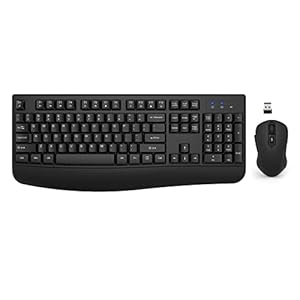When you’re fortunate sufficient to have a brand new Nintendo Switch 2 in hand proper now, you are most likely filling it up with outdated and new video games alike. The console comes with 256GB of storage in-built; that is eight instances greater than the original Switch and 4 instances greater than the Switch OLED. However the brand new console’s improved performance signifies that some video games will hog a ton of that house. Take, for example, Cyberpunk 2077, which is a 59GB obtain, whereas Split Fiction checks in at 69GB. Whereas not all titles hog a lot storage, there is a good probability you may need to add more room to your Swap 2 as time goes on.
You may want a microSD Specific card to try this. These are not the identical as the usual microSD cards you will have for the primary Swap or different gaming handhelds. They’re newer, quicker and (as to be anticipated) dearer. However if you would like more room, they’re your only choice. When you’re trying to seize one at present, we’ve laid out one of the best microSD playing cards for the Swap 2 and damaged down what you need to know before you purchase.
One of the best microSD playing cards for the Swap 2 (and why you may need to wait to purchase)
The Swap 2 is the primary mainstream system to require microSD Specific for storage growth, so there aren’t many choices that can be purchased simply but. To make issues simple, right here’s an inventory of each microSD Specific card we’ve seen at retailers on the time of writing.
128GB
256GB
512GB
1TB
Nintendo says the Swap 2 technically supports playing cards with a capability as much as 2TB, however we haven’t seen any microSD Specific mannequin transcend 1TB simply but. It’s additionally value noting that GameStop and Onn (Walmart’s in-house electronics model) aren’t producers, so it’s unclear who precisely is making their playing cards.
Inventory for these playing cards stays considerably patchy, significantly for the higher-capacity choices. However lots of the 128GB and 256GB fashions look like steadily out there as of the Swap 2’s launch week. Simply be warned that you will have to take care of prolonged ship instances in some instances. SanDisk’s microSD Specific Card has additionally elevated in worth because it first went up on the market in February; initially, it price $45 for 128GB and $60 for 256GB.
Both method, all of those playing cards are far pricier than conventional microSD choices. The Samsung Pro Plus, for instance, prices $17 for 128GB, $25 for 256GB, $43 for 512GB and $90 for 1TB as of this writing.
Keep in mind: You’re in search of microSD Specific, not “Excessive,” just like the branding SanDisk makes use of for a few of its conventional microSD cards. A microSD Specific card can have a giant “EX” emblem printed on it — should you see that, you have to be good to go.
We’ve already examined SanDisk’s Specific card and the Lexar Play Professional for our broader information to the best microSD cards. Between the 2, SanDisk’s card has a lot quicker sequential read speeds — as much as 899 MB/s vs. 712 MB/s in CrystalDiskMark, to call one benchmark — which theoretically makes it higher geared up to cut back load instances.
The Play Professional is faster for sequential writes (as much as 720 MB/s vs. 650 MB/s), out there in additional sizes and ought to be cheaper at 256GB every time it’s in inventory. (SanDisk says the 128GB model of its card has slower sequential writes than the 256GB mannequin, too.) Random efficiency is about equal, so the 2 ought to be equally adept at conserving giant video games like Mario Kart World operating easily.
We primarily examined these playing cards on a Home windows PC and Mac, although. How they carry out on the precise Swap 2 stays to be seen. Nintendo didn’t ship out early overview items to press, and we have solely simply obtained our personal retail mannequin. So we’ll want a number of extra days to complete testing.
For now, although, we will’t say for positive if the console renders all microSD Specific playing cards to related speeds. That was largely the case with the primary Swap: As soon as a (common) microSD card hit a certain threshold of efficiency, there wasn’t that a lot sensible distinction between it and different options. The Swap 2 is working with a distinct commonplace, but when one thing related have been to occur once more, the “greatest” microSD Specific card would merely be essentially the most reasonably priced one from a good model within the capability you need.
That brings us to our foremost piece of recommendation: When you can maintain off on shopping for considered one of these items early on, that’s most likely a good suggestion. It’s not simply in regards to the lack of testing — in truth, we’d be shocked if any of those playing cards are actually “dangerous.”
It is extra about worth: Barring extra tariff shenanigans, all of those playing cards are as costly at present as they’re ever prone to get. The Swap 2 is already common and can proceed to be, thus extra microSD Specific playing cards will have to be made and costs will (ultimately) come down. Attempt to use all 256 of the gigabytes baked into the Swap 2 first, even when it means having to delete a sport or two. However should you’re completely positive you need more room straight away, the playing cards above ought to be ok.
What are microSD Specific playing cards?
Most microSD playing cards are based mostly on a regular referred to as Extremely Excessive Pace (UHS), of which there are three variations: UHS-I, UHS-II and UHS-III. The overwhelming majority of playing cards you will have purchased up to now make the most of UHS-I. These have one row of pins within the again and a theoretical most information switch velocity of 104 megabytes per second (MB/s). (Although many playing cards are in a position to surpass that restrict with proprietary tech and card readers.) The unique Swap has a UHS-I microSD slot, as do most different gaming handhelds like Valve’s Steam Deck.
UHS-II playing cards add a second row of pins and might attain as much as 312 MB/s. These are pricier and far much less widespread than playing cards based mostly on UHS-I, however they’re supported by some cameras and higher-power handhelds just like the ASUS ROG Ally X. UHS-III, in the meantime, is twice as quick as UHS-II in idea (624 MB/s), however no microSD playing cards have truly used it.
UHS-I playing cards have held on over time as a result of they’re low-cost, broadly supported and quick sufficient for the issues most individuals want them to do: report 4K video, stash pictures and so forth. However with the Swap 2, Nintendo needs more. The brand new console is dramatically extra highly effective, which permits it to run demanding games which will have initially been constructed for stronger {hardware} just like the PlayStation 5, Xbox Collection X or gaming PCs. The system also uses UFS 3.1 storage internally, which is far speedier than the eMMC storage utilized by the unique Swap. (A customized file decompression engine helps enhance load instances as effectively.) So if the Swap 2 goes to just accept microSD playing cards, it wants ones that gained’t carry a severe drop-off in efficiency and might maintain up with fashionable video games.
Therefore, SD Specific. This commonplace has technically been around since 2018 however principally went nowhere till the Swap 2 got here alongside. It additionally makes use of a second row of pins, nevertheless it lets microSD playing cards benefit from the PCI Specific (PCIe)/NVMe interface, which is identical underlying tech utilized by modern SSDs. Because of this, it will possibly produce significantly quicker learn and write speeds, with a present theoretical maximum of 985 MB/s.
As famous above, real-world efficiency gained’t be fairly that quick. Even when it was, one of the best microSD Specific playing cards would nonetheless be a lot slower than the NVMe SSDs used by the PS5 and Xbox. (Sony recommends SSDs with sequential learn speeds of at the least 5,500 MB/s.) And so they’ll fall effectively beneath their peak speeds beneath sustained hundreds: SanDisk, for example, says sustained write speeds for its 128GB Specific card can drop as little as 100 MB/s.
However they’re nonetheless a marked enchancment over outdated UHS-I playing cards, and in idea, they need to be faster than some older SATA-based SSDs when it comes loading sport ranges, asset streaming, retrieving saves or copying video games to exterior storage. Whereas SanDisk’s microSD Specific card can produce sequential learn speeds round 900 MB/s, Lexar’s Professional Silver Plus — the highest UHS-I choose in our common microSD card information — topped out simply over 200 MB/s, and that’s with a proprietary reader. (On the primary Swap, it’d be nearer to 100 MB/s.) Sequential writes and random speeds have been three to 4 instances higher as effectively, and typically much more relying on the benchmark we used.
It stays to be seen how effectively these Specific playing cards will maintain up with prolonged use, and there’s no solution to know precisely when their sky-high costs will drop. Non-Swap 2 gadgets that help microSD Specific are nonetheless exceedingly uncommon, and the usual itself isn’t backwards suitable with UHS-II, so that you’ll be restricted to UHS-I speeds if you wish to use your card with one other system (until you purchase a pricey external reader). Nonetheless, whereas the elevated prices and restricted choice are annoying, the tech itself appears worthy of a next-gen Swap.
Trending Merchandise

Acer Aspire 3 A315-24P-R7VH Slim Laptop computer | 15.6″ Full HD IPS Show | AMD Ryzen 3 7320U Quad-Core Processor | AMD Radeon Graphics | 8GB LPDDR5 | 128GB NVMe SSD | Wi-Fi 6 | Home windows 11 Residence in S Mode

LG 27MP400-B 27 Inch Monitor Full HD (1920 x 1080) IPS Display with 3-Side Virtually Borderless Design, AMD FreeSync and OnScreen Control – Black

Thermaltake V250 Motherboard Sync ARGB ATX Mid-Tower Chassis with 3 120mm 5V Addressable RGB Fan + 1 Black 120mm Rear Fan Pre-Installed CA-1Q5-00M1WN-00

TP-Hyperlink AXE5400 Tri-Band WiFi 6E Router (Archer AXE75)- Gigabit Wi-fi Web Router, ax Router for Gaming, VPN Router, OneMesh, WPA3

CORSAIR iCUE 4000X RGB Tempered Glass Mid-Tower ATX PC Case – 3X SP120 RGB Elite Followers – iCUE Lighting Node CORE Controller – Excessive Airflow – Black

Wireless Keyboard and Mouse Combo, EDJO 2.4G Full-Sized Ergonomic Computer Keyboard with Wrist Rest and 3 Level DPI Adjustable Wireless Mouse for Windows, Mac OS Desktop/Laptop/PC








